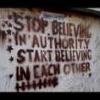Fusillades
Vente d'armes...
346 membres ont voté
-
1. Vous êtes:
-
favorable à la vente libre sans conditions de tous types d'armes à feu?129
-
favorable à la vente sous conditions de tous types d'armes à feu?106
-
favorable à la vente des armes non automatiques sans conditions?13
-
favorable à la vente des armes non automatiques sous conditions?53
-
favorable à la vente d'armes de chasse uniquement sous conditions?16
-
défavorable à la vente de tous types d'armes?35
-


Messages recommandés
Créer un compte ou se connecter pour commenter
Vous devez être membre afin de pouvoir déposer un commentaire
Créer un compte
Créez un compte sur notre communauté. C’est facile !
Créer un nouveau compteSe connecter
Vous avez déjà un compte ? Connectez-vous ici.
Connectez-vous maintenant